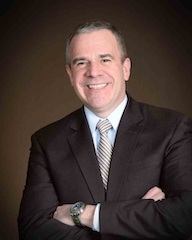Leaning in to Social Distancing: A Perfect Storm for Wealth Transfer

This will be held in webinar format. Webinar access information will be emailed to SFEPC members. Please contact Angie Kuiper at Admin@SiouxFallsEPC.org if you do not receive them or would like to register a non-member.
This will also be the annual meeting of the Sioux Falls Estate Planning Council. The meeting will take place at 11:30 am prior to the presentation.
VALUE-SHIFTING STRATEGY
Among other topics, I would like to discuss a strategy whereby an existing “nonexempt” trust would sell assets to a new “GST-exempt” trust at the long-term applicable federal rate (AFR)..
To facilitate that discussion, I append below a brief description of the strategy, and links to a key private letter ruling (PLR 201633021), as well as to seminal articles on BDITs and BDOTs.
Purpose: To shift future growth and corpus from an existing nonexempt trust (“existing trust”) to a new, otherwise virtually identical GST-exempt trust (“new trust”) by having the existing trust sell assets to the new trust in exchange for a 15- or 20-year, balloon note at the long-term AFR. The strategy is most effective when the existing trust is the deemed owner of the new trust for federal income tax purposes. For nonprecedential authority on the proposition that a trust may be the deemed owner of another trust for federal income tax purposes, see https://www.irs.gov/pub/irs-wd/201633021.pdf.
Sense of urgency: This strategy is effective only when the long-term AFR is very low, as it is currently. In May 2020, the long-term AFR will be 1.15%, an all-time low. As the Treasury yield curve steepens, as it inevitably will, the long-term AFR will rise.
New trust: The new trust may be structured either as a beneficiary defective inheritors’ trust (BDIT) or as a beneficiary deemed ownership trust (BDOT):
· A BDIT typically would be funded with a gift of $5,000 to which the donor would allocate GST exemption. The new trust would grant the trustee of the existing trust a one-time “Crummey” power of withdrawal over the $5,000 contribution to corpus. Creditworthiness of the new trust typically would be established using one or more personal guarantees. For further information on BDITs, see http://www.naepcjournal.org/journal/issue07h.pdf.
· A BDOT typically would be funded with a much more substantial gift (e.g., $500,000) to which the donor would allocate GST exemption. The new trust would grant the trustee of the existing trust an annual power of withdrawal over taxable income of the new trust. Based upon common practice, the new trust should be able to purchase $9 of assets from the existing trust for each $1 contributed. For further information on BDOTs, see http://leimbergservices.com/all/LISIMorrowPDF9_5_2017.pdf.
Bernstein analysis: At an interest rate of 1.15%, annual interest received by the existing trust is insufficient to offset its ever-increasing income-tax obligations as deemed owner; repayment of principal is necessary to permit the existing trust to meet those obligations. Over a period of about 12-15 years, the corpus of the existing trust will be substantially depleted as a result. If the existing trust were to sell assets to the new trust at even a modest valuation discount (e.g., 25%), depletion would be accelerated by several years.
About the Speaker:
THOMAS J. PAULOSKI is National Managing Director for Wealth Planning and Analysis, the research division of Bernstein Private Wealth Management’s Private Client Group. He works with private clients and their advisors on wealth transfer strategies, focusing on tax-efficient wealth management and asset allocation decisions. Previously, Tom was a partner at the Chicago law firm of Winston & Strawn LLP, where he concentrated his practice in estate, tax, and business planning. Tom also has been a member of the Chicago law firm of Levin & Schreder, Ltd., a Vice President in the Private Client Group of Zurich Life in Long Grove, Illinois, and a partner at the Chicago law firm of Schiff Hardin & Waite.
Tom is a nationally known speaker on estate planning, tax, and insurance issues, and has written numerous articles and continuing legal education materials on estate planning topics. He serves on the faculty of the American Bankers Association National Trust and National Graduate Trust Schools, and has served on the adjunct faculty of the Cannon Financial Institute Schools. Tom has been an adjunct professor at Loyola University Chicago School of Law and has taught estate planning classes at Northwestern University Law School. Tom also has served on the editorial board of Trusts & Estates magazine. He retired from the United States Naval Reserve in 2003, after 21 years of service.
Tom received his bachelor of science degree in environmental engineering from Northwestern University, and his juris doctor, magna cum laude, from Loyola University Chicago School of Law, where he served as editor-in-chief of the Loyola Law Journal.
